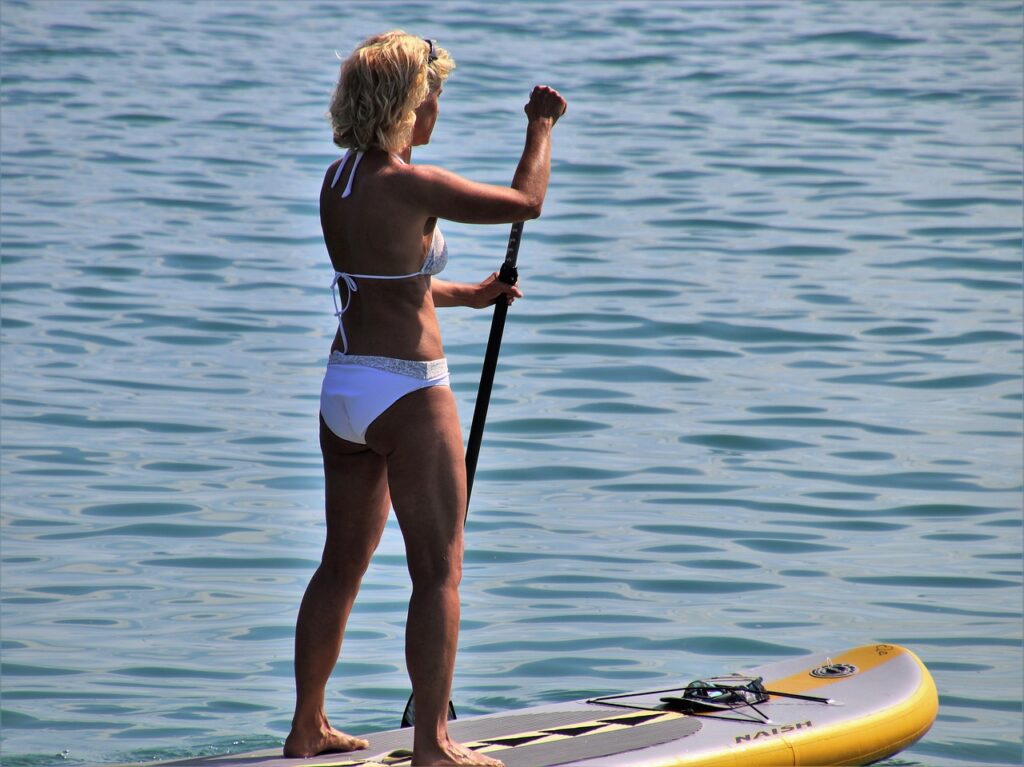 Stand up paddleboarding is a great way to explore a new place, improve your physical and mental health, and just have fun. While it’s generally quite an easy sport to get to grips with, all new sports may have some teething problems at first.
Stand up paddleboarding is a great way to explore a new place, improve your physical and mental health, and just have fun. While it’s generally quite an easy sport to get to grips with, all new sports may have some teething problems at first.
With that in mind, we’ve prepared a list of the most important dos and don’ts in stand up paddleboarding. These should not only keep you safe, but also help you to take the best care possible of your paddleboard. Let’s get started!
DO
Get the right Equipment
The first thing you need to think about if you’re going to start stand up paddleboarding is equipment. Yes, you will need a board and paddle – that goes without saying. However, you can’t just get any old thing and hope for the best.
If you’re going to invest in a board and paddle, make sure to get the right ones for you. iSUPs are usually a great way for beginners to start the sport. However, if you have your heart set on SUP surfing or touring, you’ll need a purpose-built board.
A paddle is usually quarter of the cost of the board and 25cm longer than your height. Other essential equipment includes a personal floatation device (a legal requirement in some parts of the world) and a leash. Don’t scrimp on either of these – they are important for your safety.
Get your body in the right position
Once you’ve got all of your equipment sorted, you need to be able to use the board correctly. Many paddlers start on their knees and stand up one foot at a time until they get their balance correctly. However, if you plan on standing straight away take the following into account:
Make sure your feet are a shoulder-width apart in the centre of the board with your knees positioned just above so you can see your toes. Further up your body, make sure that your shoulders are relaxed as the majority of SUP injuries are in this part of your body!
If you can get your positioning right, it’s easier to improve your balance and flexibility – one of the key benefits of SUP!
Fall into the board
Now, when you’re a beginner, the positioning is a lot to take in. Add in potentially choppy waters and it can be a recipe for disaster! With every sport, you might make mistakes at first and if you make a mistake in SUP, you’re likely to fall off the board. And that’s okay! You really shouldn’t let it put you off.
However, do take into account that there is a right way to fall – as strange as that sounds. You should fall away from the board, because if you just go forwards you could get a pretty nasty injury. Even an iSUP is pretty unforgiving if you hit it full force!
Know your limits
It’s important not to run before you can walk in paddle boarding… Trying to do too much too soon will make it less enjoyable, and will potentially put you and others at risk of injury. Take your time in learning the basics – once you have got them sorted, you can really enjoy a SUP’s versatility. For example, you could try SUP surfing or racing!
DON’T
Paddle in shallow waters
While you should paddle in still and flat waters, make sure that they’re not too shallow. It might be nerve-wracking heading straight out to deeper waters, but that’s what you must do if you want to protect your board. Whether it’s lakes, rivers, or even the open ocean, you can always find debris in shallow waters such as rocks and stones that will damage your board. Fins are especially vulnerable to damage. If you feel the water is becoming too shallow, hop off and wade to shore. The good thing about SUPs is that they’re generally quite light, so it won’t be very difficult to do.
Drag your board
Similarly to paddling in shallow waters, dragging your board can have a negative impact on it too. After a day out paddling, it may be tempting to drag it across the sand as your muscles are tired and you just want to get back in the car and go home. However, find that last little reserve of energy and hoist it over your shoulder. Even the smallest debris on grass or sand can have an irreversible effect on your SUP.
If you have an iSUP, one easy way to get around this is to deflate it as soon as you get out of the water and roll it up into a purpose-built backpack. A hardboard? You’re just going to have to put the effort in and hold it up high!
Leave your board dirty or out in the sun
A lot of the don’ts in paddle boarding are related to caring for your board. And one of the most important is keeping it clean. After a day out on the water, give it a quick rub down with fresh water then dry off with a towel. This will get rid of any stains you’ve picked up. However, don’t be tempted to dry it off in the sun. Extra UV and heat can damage the board – so make sure that you store it correctly.
Forget your leash or PFD
Okay, we already mentioned this in the do section. However, it’s super important to take your PFD (let us remind you it’s a legal requirement where paddle boards are classed as water vessels, such as Hong Kong) and your leash.
Now that you know the most important dos and don’ts of paddle boarding, get out there and enjoy yourself on your board!